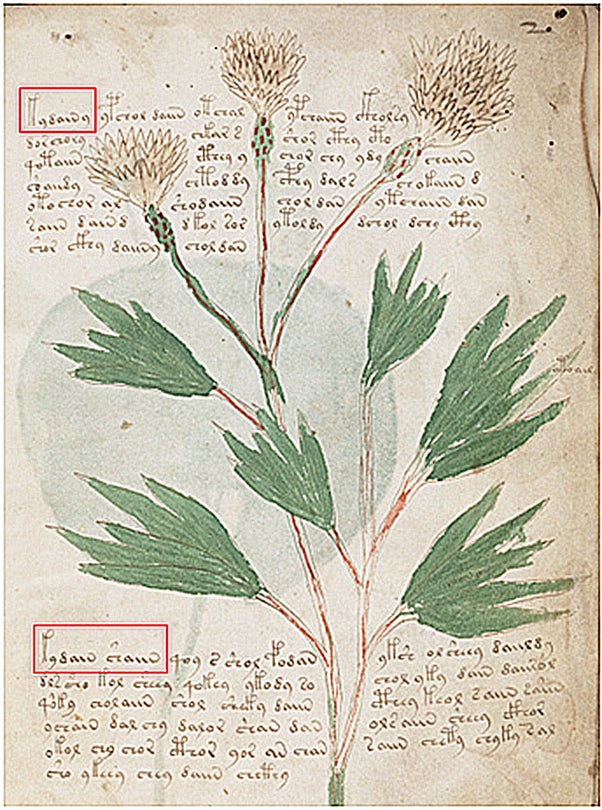British academic claims to have made a breakthrough in his quest to unlock the 600-year-old secrets of the mysterious Voynich Manuscript

Your support helps us to tell the story
This election is still a dead heat, according to most polls. In a fight with such wafer-thin margins, we need reporters on the ground talking to the people Trump and Harris are courting. Your support allows us to keep sending journalists to the story.
The Independent is trusted by 27 million Americans from across the entire political spectrum every month. Unlike many other quality news outlets, we choose not to lock you out of our reporting and analysis with paywalls. But quality journalism must still be paid for.
Help us keep bring these critical stories to light. Your support makes all the difference.
Written in an unknown language more than 600-years-ago, it’s a mysterious document which has baffled scholars, cryptographers and historians, who have not been able to decypher a single letter or word for decades.
But now an applied linguistics professor from the University of Bedfordshire claims to have begun to unlock the secrets of the enigmatic 15th century Voynich Manuscript.
Professor Stephen Bax says he has decoded 10 words using an analytical approach, and hopes that his breakthrough could lead to more.
The manuscript consists of cryptic illustrations of human figures, stars and exotic plants, all described in an unknown script that has confounded translators for a century, after it was picked up among a batch of second-hand publications in Italy by antique book dealer Wilfrid Voynich in 1912.
Carbon-dated to some time in the 1400s, the manuscript has since found fame in a number of novels, and more recently in the Assassin’s Creed computer game, but it still manages to keep its message hidden.
Numerous theories have linked the work to a young Leonardo de Vinci, a lost tribe of Israel, or even aliens.

Professor Bax says he used his knowledge of medieval manuscripts and his familiarity with Semitic languages such as Arabic to work on the historical manuscript.
“I hit on the idea of identifying proper names in the text, following historic approaches which successfully deciphered Egyptian hieroglyphs and other mystery scripts, and I then used those names to work out part of the script,” he said.
“The manuscript has a lot of illustrations of stars and plants. I was able to identify some of these, with their names, by looking at mediaeval herbal manuscripts in Arabic and other languages, and I then made a start on a decoding, with some exciting results.”
His partial decoding could prove a breakthrough for eventually discovering the text’s entire meaning.
He added: “My aim in reporting on my findings at this stage is to encourage other linguists to work with me to decode the whole script using the same approach, though it still won’t be easy. That way we can finally understand what the mysterious authors were trying to tell us.”
“But already my research shows conclusively that the manuscript is not a hoax, as some have claimed, and is probably a treatise on nature, perhaps in a Near Eastern or Asian language.”
Join our commenting forum
Join thought-provoking conversations, follow other Independent readers and see their replies
Comments